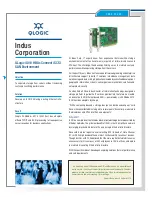
Channelized T1 Port Adapter Installation and Configuration 41
Configuring 2CT1 Interfaces
Step 5
To shut down existing individual controller interfaces, enter the slot/port:channel-group
or pri-group address of each interface followed by the shutdown command. When you
have entered all the interfaces to be shut down, press Ctrl-Z (hold down the Control key
while you press Z) to exit configuration mode and return to the EXEC command
interpreter prompt as follows:
Router(config)# interface serial 1/0:0
Router(config-if)# shutdown
Ctrl-Z
Router#
Step 6
Write the new configuration to memory as follows:
Router# copy running-config startup-config
[OK]
Router#
The system displays an OK message when the configuration has been stored.
Step 7
To verify that new interfaces are now in the correct state (shutdown), use the show
interface serial port adapter slot number/interface port number:channel-group or
pri-group command to display the specific interface, or use the show controller
command, followed by the type (t1) and port adapter slot number/interface port number,
to display the status of all interfaces of the controller.
Router# show interface serial 1/0:0
Serial1/0:0 is down, line protocol is down
Hardware is MPA-T1
[display text omitted]
Step 8
To reenable the interfaces, repeat the above steps, but use the no shutdown command in
Step 4; then write the new configuration to memory as follows:
Router(config)# int serial 1/0:0
Router(config-if)# no shutdown
Ctrl-Z
Router#
Router# copy running-config startup-config
[OK]
Router# show interface serial 1/0:0
Serial1/0:0 is up, line protocol is up
Hardware is MPA-T1
[display text omitted]
For complete descriptions of software configuration commands, refer to the publications listed in the
“Related Documentation” section on page 2.
Configuring Channelized T1 Interfaces
Following are instructions for a basic channelized T1 configuration: enabling a controller and
specifying IP routing. You might also need to enter other configuration commands depending on the
requirements for your system configuration and the protocols you plan to route on the interface. For
complete descriptions of configuration commands and the configuration options available, refer to
the publications listed in the “Related Documentation” section on page 2.













































